Parrots can be observed all across the world’s tropical regions. However, on the border of what has been regarded tropical, the southern tip of Florida is (barely) within the neotropical realm and has been home to a variety of birds.
That’s what we’ll be talking about in this document: the different types of parrots in Florida.
Unfortunately, Florida’s solely one native parrot has now become extinct. So now, all species discovered there today were introduced unintentionally because more often than not, through captive breeding.
Their colonies have been naturalized, but they’re very small, and very little is known regarding them.
Consider the extensive list of parrot species that lived in Florida.
| Image | Name |
|---|---|
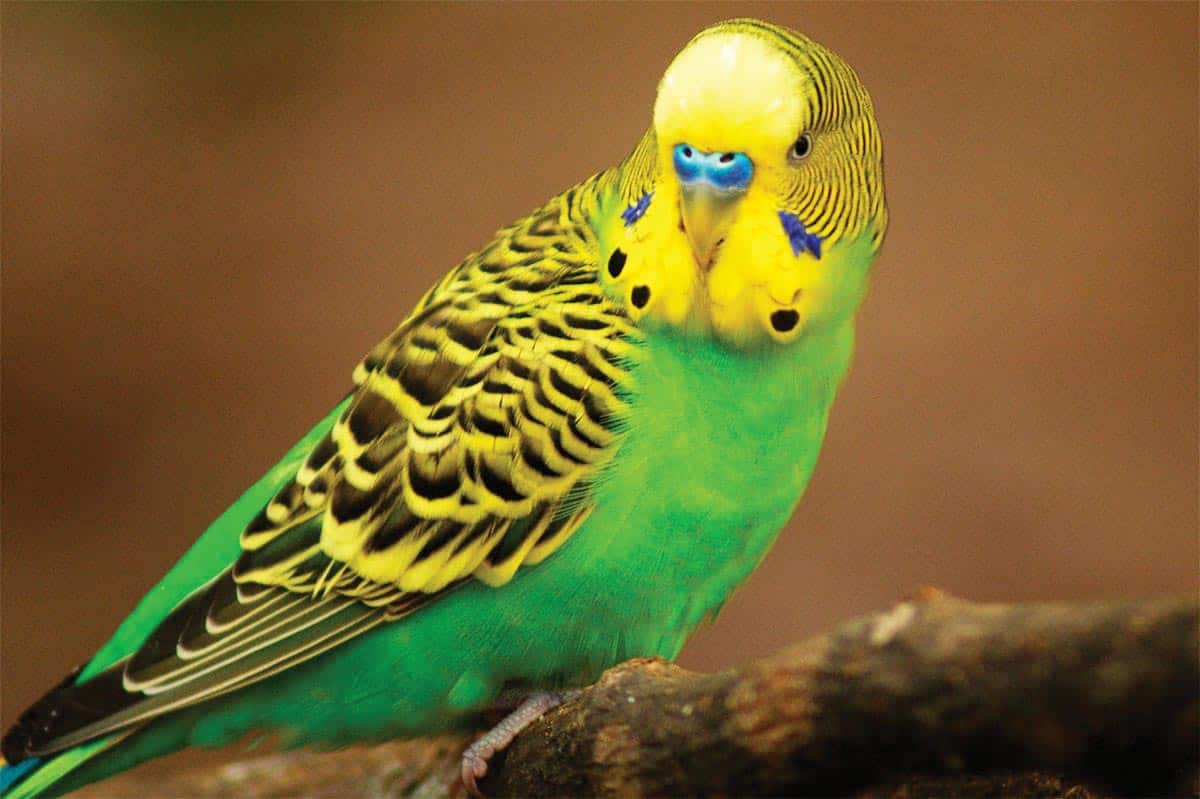 | Budgerigar |
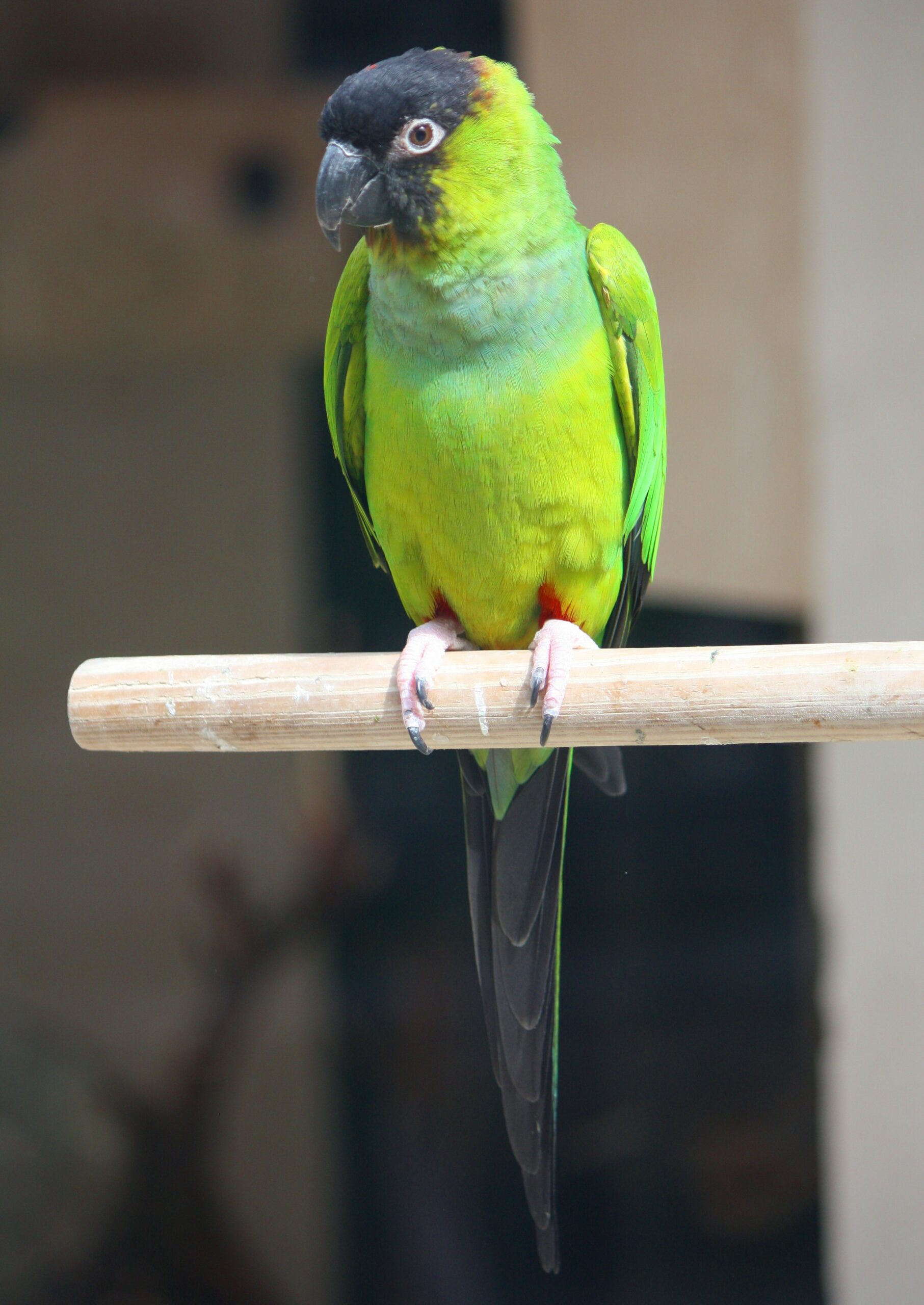 | Nanday Parakeet |
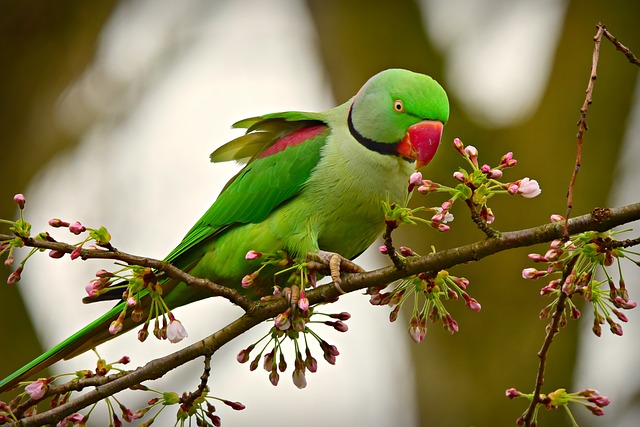 | Rose-ringed Parakeet |
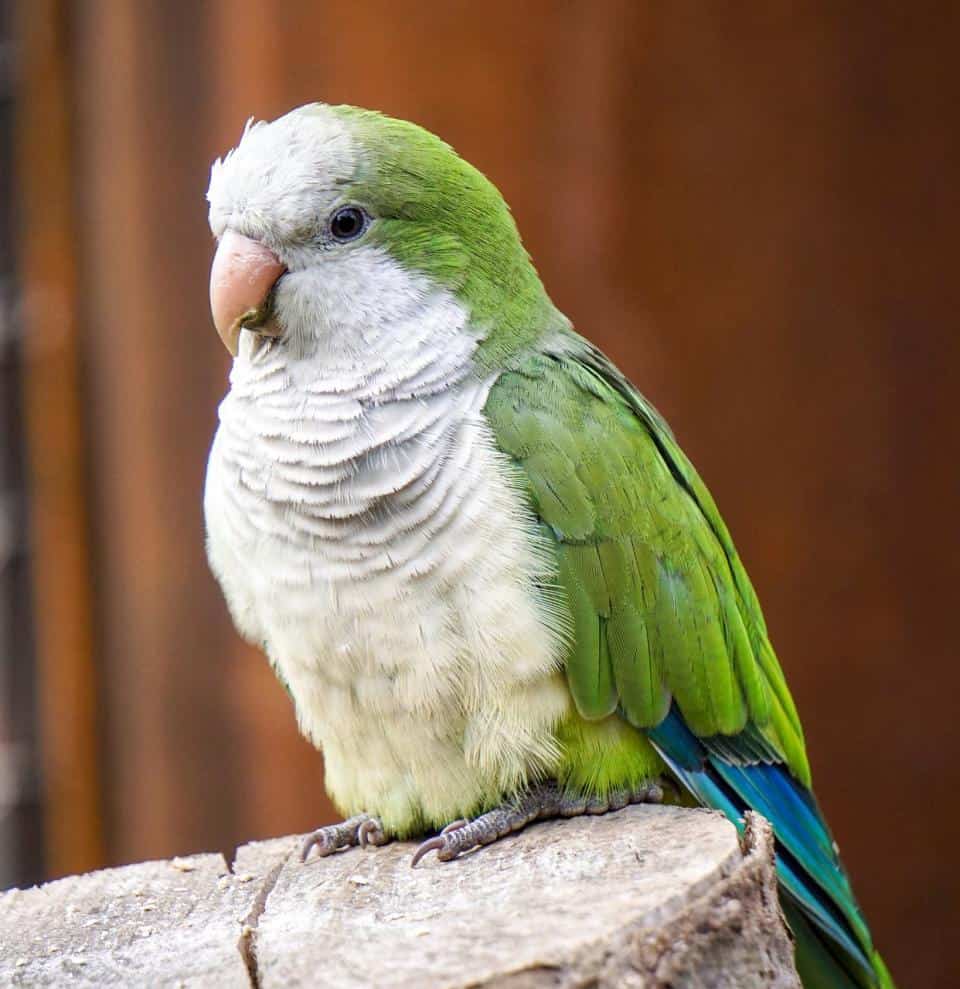 | Monk Parakeet |
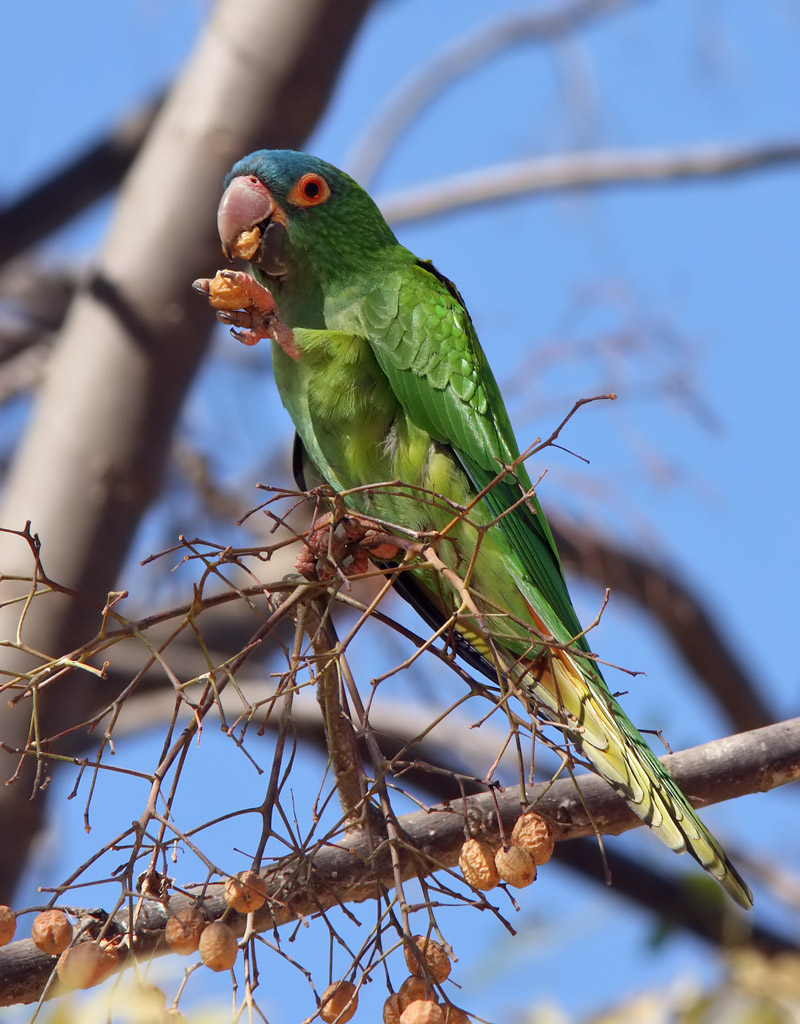 | Blue-crowned Parakeet |
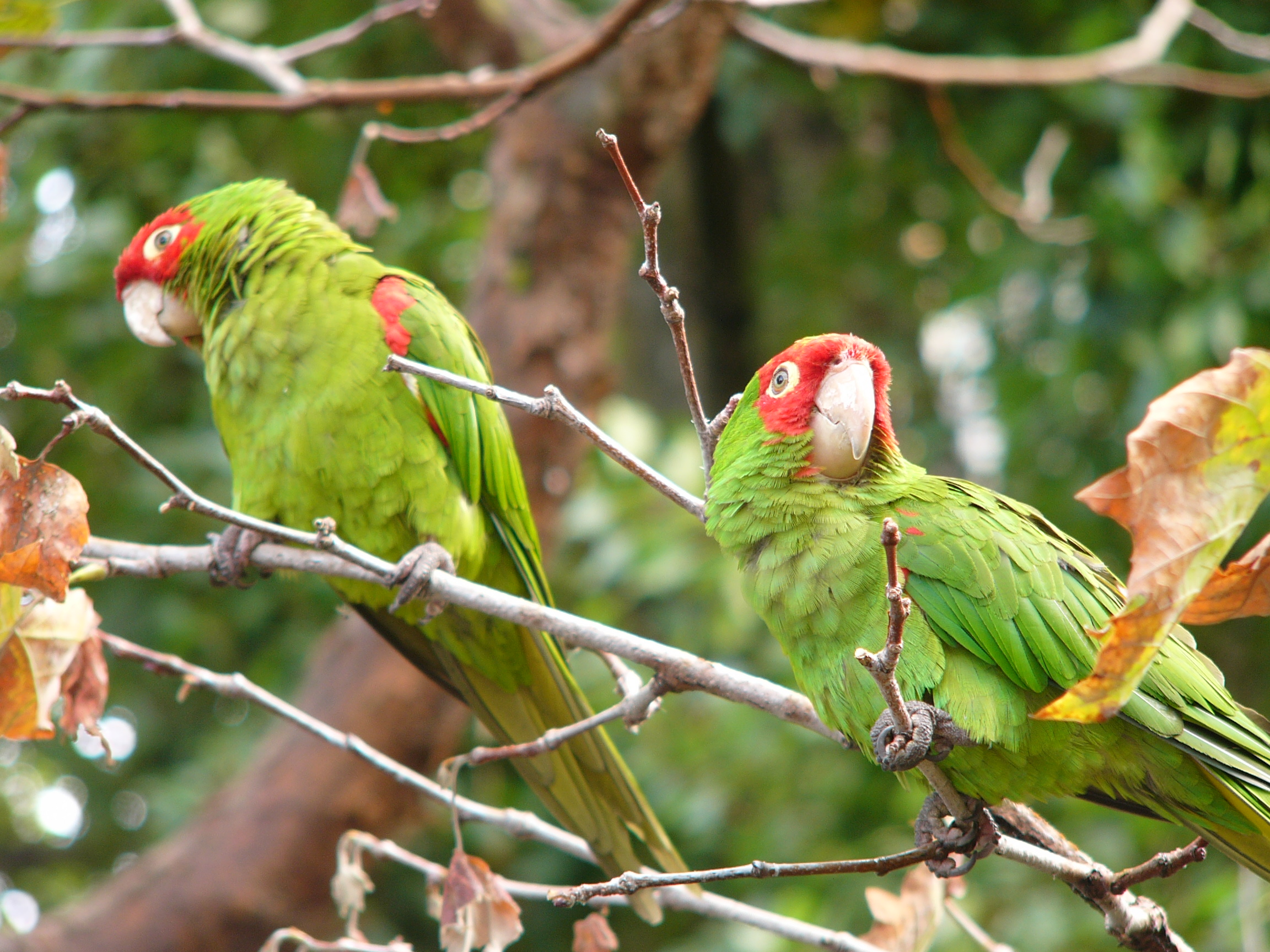 | Red-Masked Parakeet |
 | Mitred Parakeet |
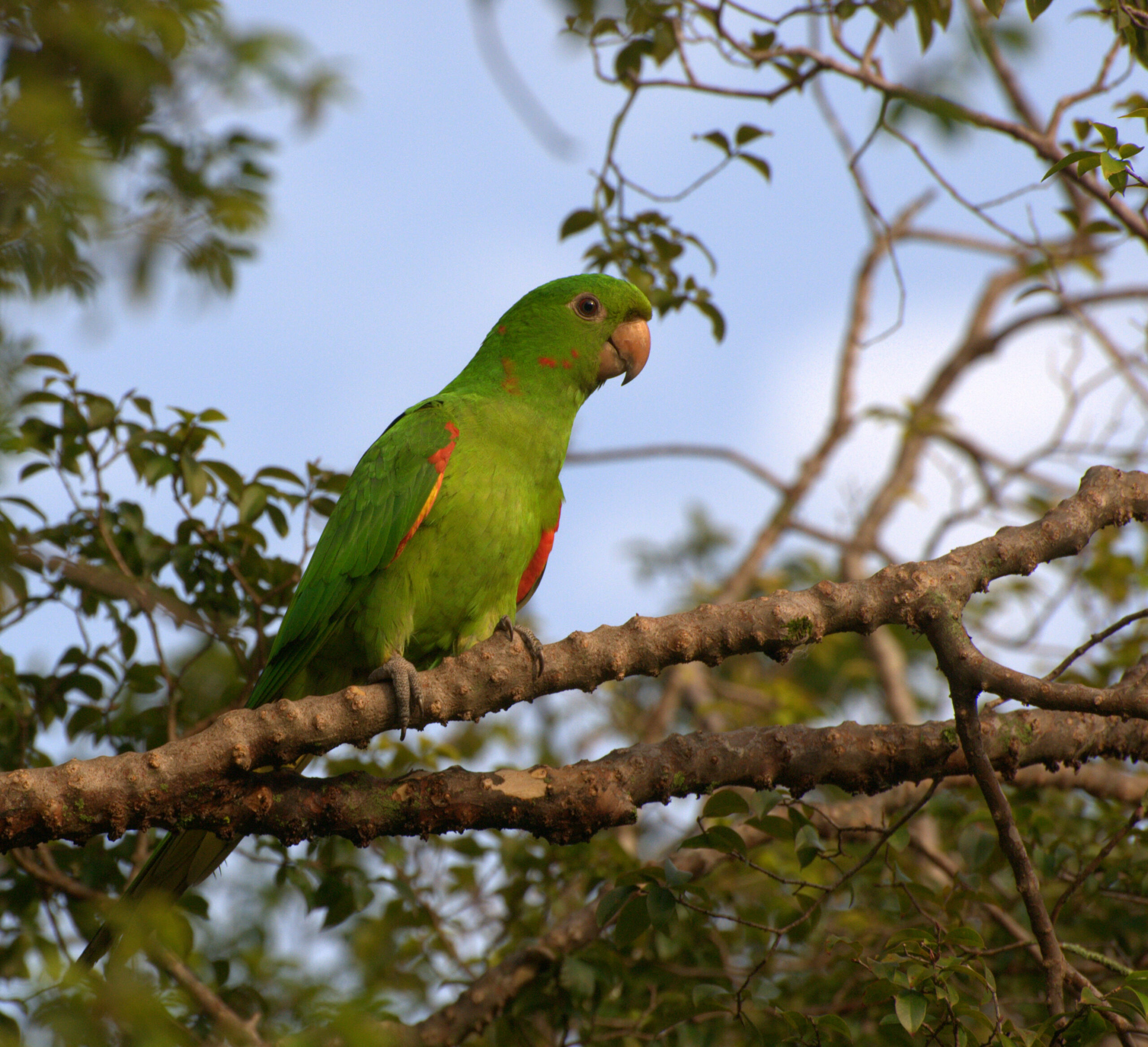 | White-Eyed Parakeet |
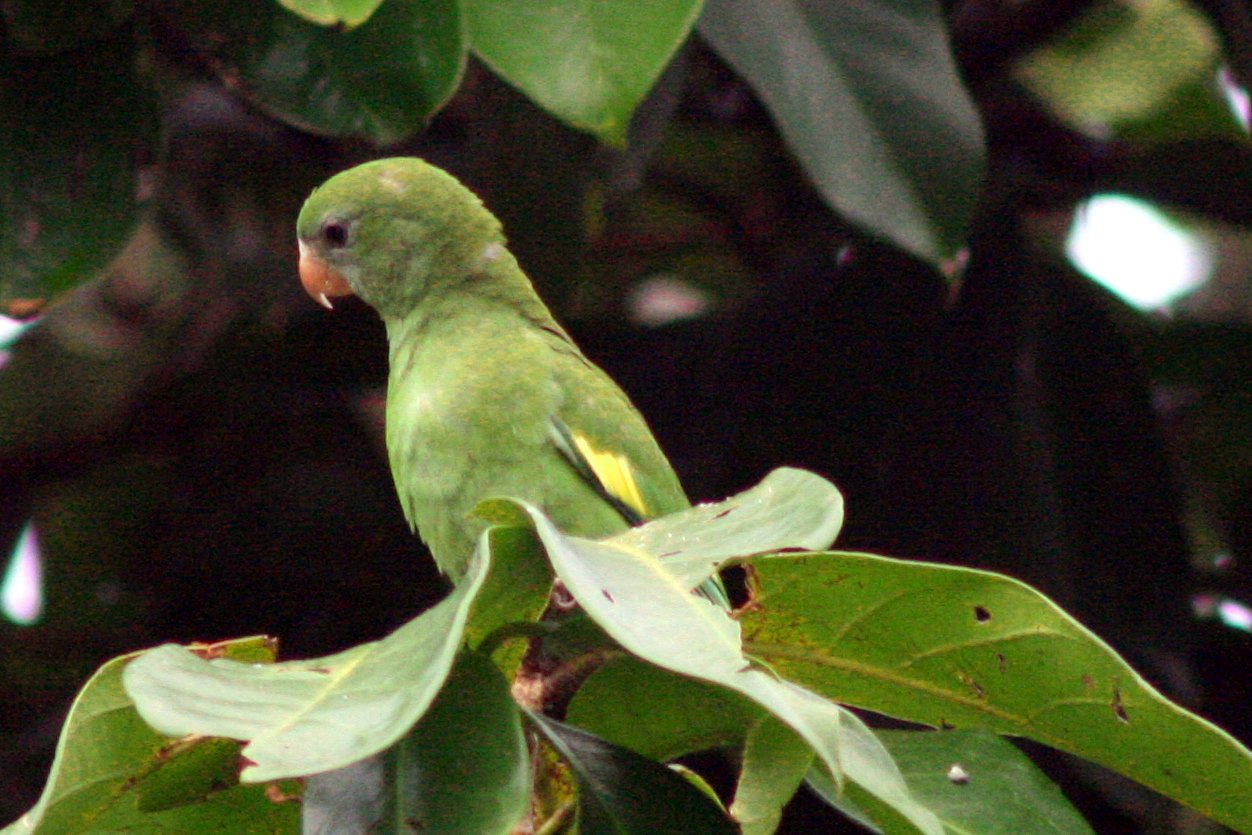 | White-Winged Parakeet |
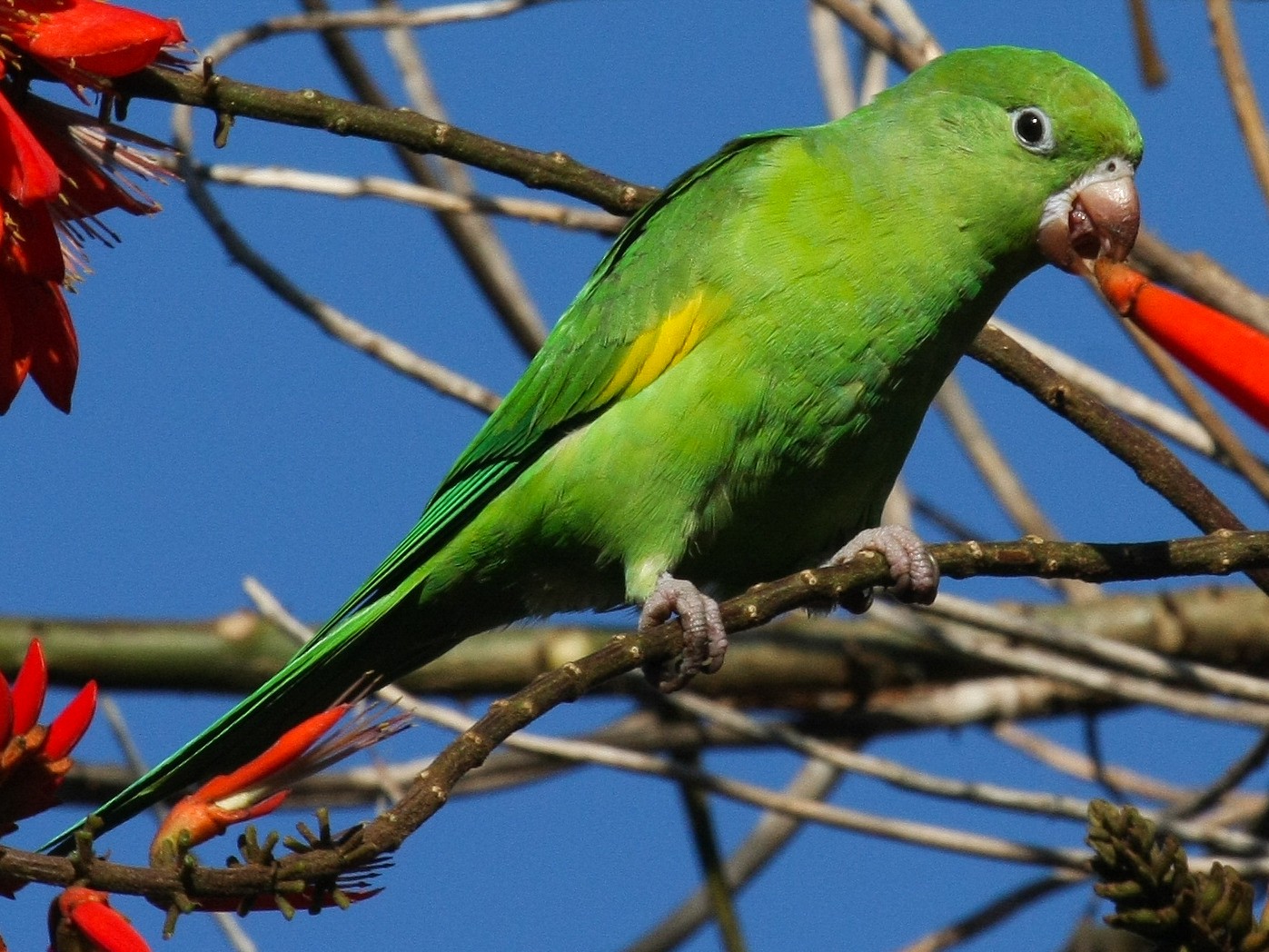 | Yellow-Chevroned Parakeet |
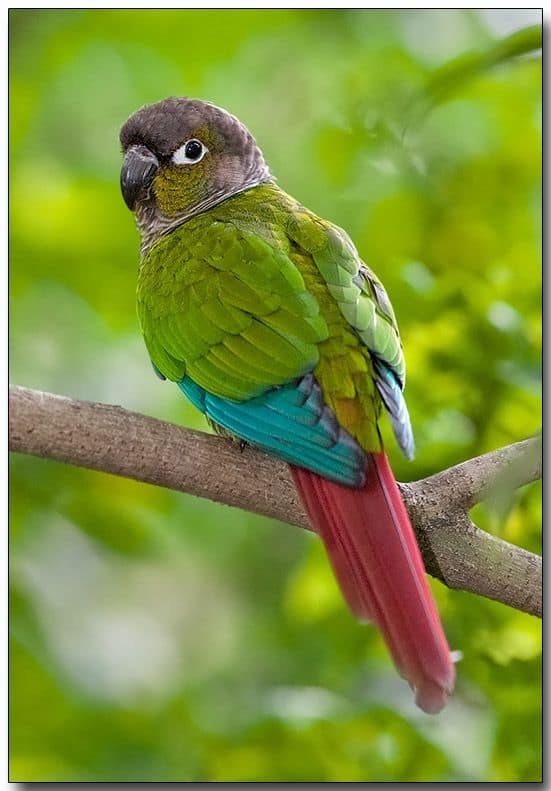 | Green Parakeet |
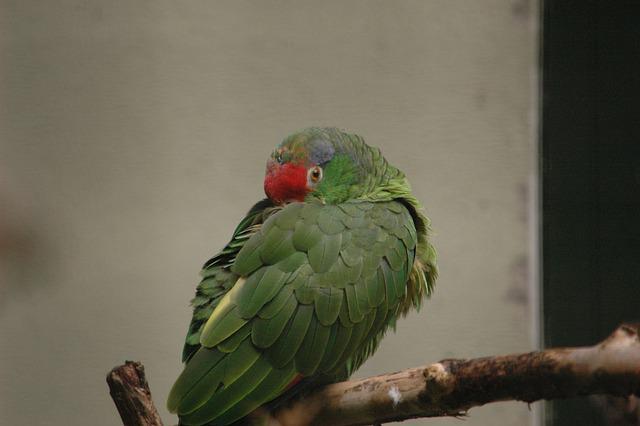 | Red-Crowned Parrot |
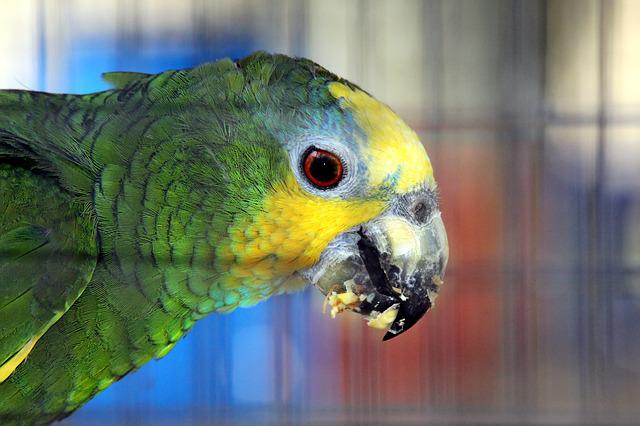 | Orange-Winged Parrot |
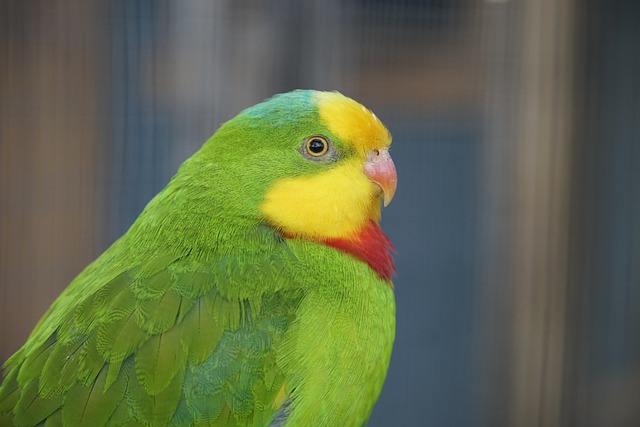 | Yellow-Headed Parrot |
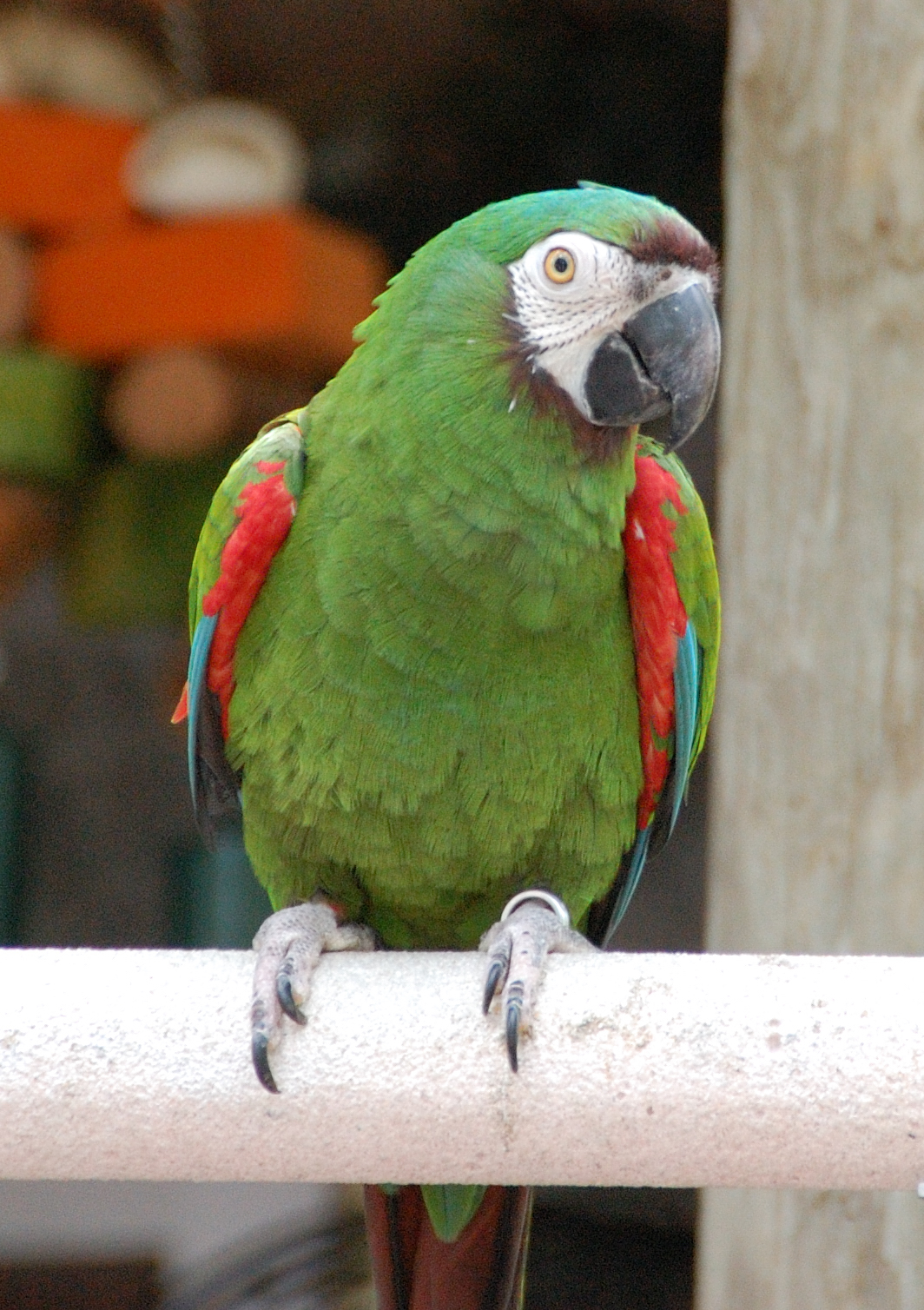 | Chestnut-Fronted Macaw |
Different Species of Parrots in Florida
1. Budgerigar
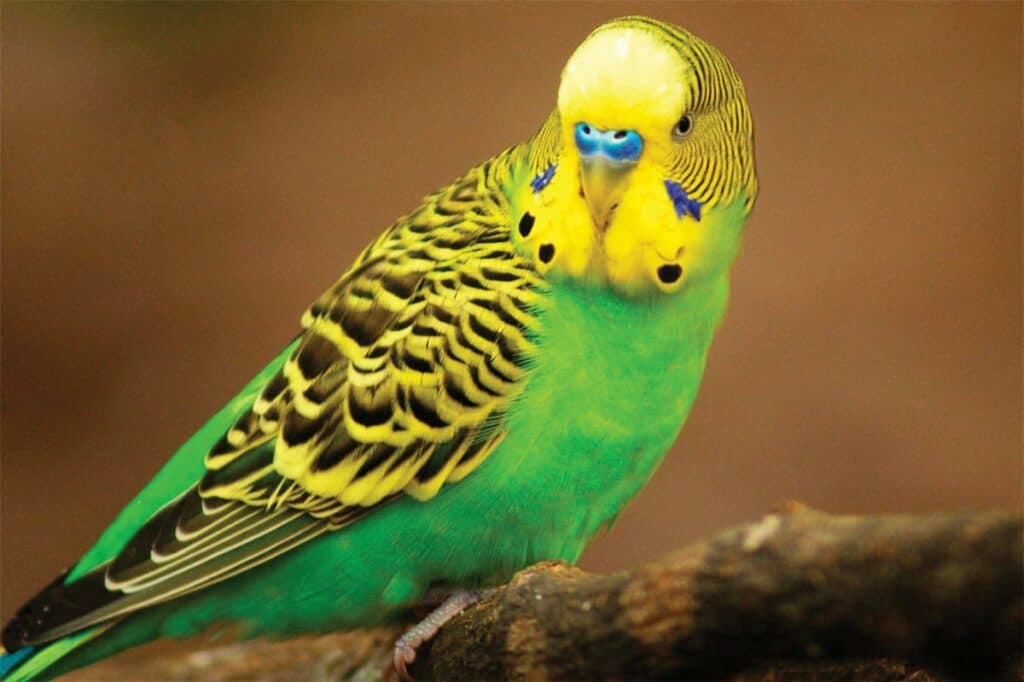
These miniature parrots are often the epitome of the “pet bird” throughout Florida. There are many different colors, such as blue, white, and yellow, but the primary feathers in the wild are green in color.
| Length | 7 inches |
| Wingspan | 12 inches |
| Weight | 1 ounce |
Budgies were once quite ubiquitous in Florida, which has inhabitants of over 20,000 individuals. There are believed to be less than 100 birds left today, with populations confined to urban areas all along Gulf Coast from Crystal River to Fort Lauderdale, as well as Fort Myers.
Apart from the exotic flora in such regions ideal for budgies, their species decrease is due to house sparrows, who have tried to claim almost all nesting boxes.
2. Nanday Parakeet
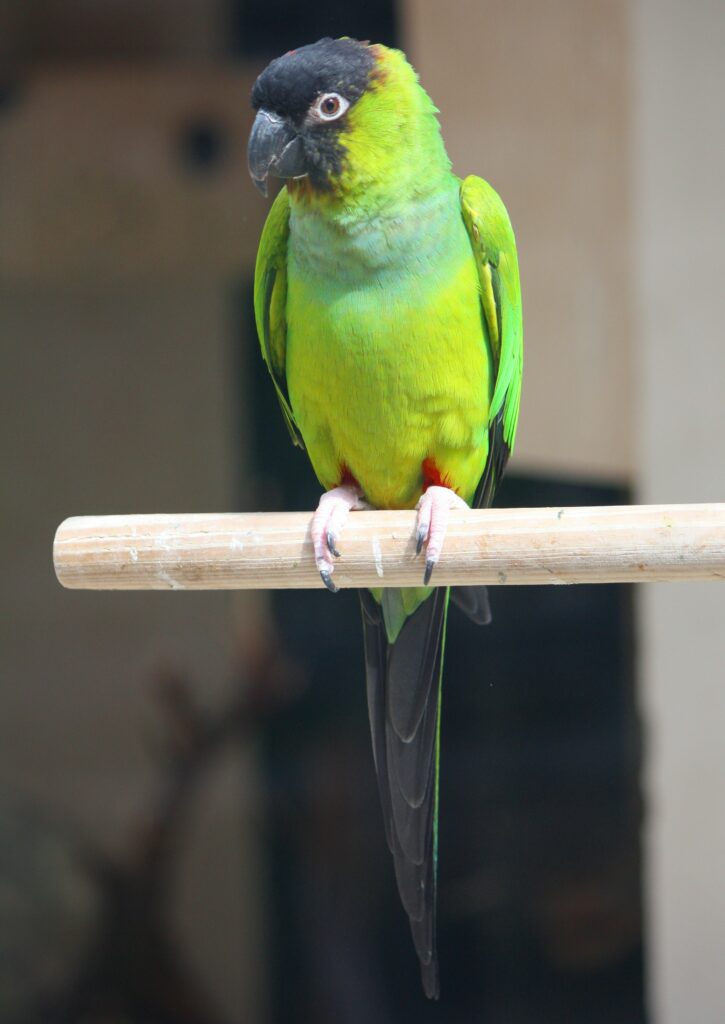
The black beak and heads, exquisite blue coloration on the outer wings and breast, and reddish legs distinguish Nanday parakeets.
The term “Nanday” is derived from their indigenous origin and is also known as the “Black-hooded Parakeet.”
| Length | 12 inches |
| Wingspan | 23 inches |
| Weight | 4.5 ounces |
Nandays feature multiple accents and characters both in the wild and in captivity. They have such a good memory and therefore can memorize up to 20 different words.
These stunning creatures have formed settlements throughout the Tampa Bay Area, notably St. Petersburg, as well as along the southern coast, including Miami, for an overall population of around +/- 1000 individuals and growing.
3. Rose-ringed Parakeet

The eye-ring and beak of these pale green parakeets are blood red. Males have a vibrantly colored head, with pink and blue at the nape and a small black neck. Their pointy, lengthy tails provide them with a slim appearance, making them a particularly appealing bird.
| Length | 16 inches |
| Wingspan | 18.5 inches |
| Weight | 4.1 ounces |
However, this adaptive bird is native to India and Africa, and it has formed communities all around the world. There are many natural flocks of roughly 200 birds in Florida all over Naples and Fort Myers.
4. Monk Parakeet

Monk parakeets possess distinctive feathers that include grey necks, faces, and breasts, as well as blue wings. They are undeniable.
These lovely parakeets are by far the most common psittacid in North America. There are many populations on both the west and east coastlines of Florida.
| Length | 11.5 inches |
| Wingspan | 19 inches |
| Weight | 3.5 ounces |
Monk Parakeets are now the only parrots who do not nest in holes but instead create gigantic stick nests in which they dwell in colonies. There are a number of nest compartments or “apartments” with passages heading outdoors.
Their nests may be almost as big as a small vehicle and get bigger every year. Many colonies have been known to include 200 or even more nests!
5. Blue-crowned Parakeet

These animals are green in color (as are many of the parrots upon that list) with a blue head. The inner sections of the tail feathers appear reddish, which is not always visible.
| Length | 14.5 inches |
| Wingspan | 24 inches |
| Weight | 7 ounces |
There are around 125 Blue crowned Parakeets throughout Florida, with numbers expanding in Fort Lauderdale, St. Petersburg, and Upper Keys.
6. Red-Masked Parakeet
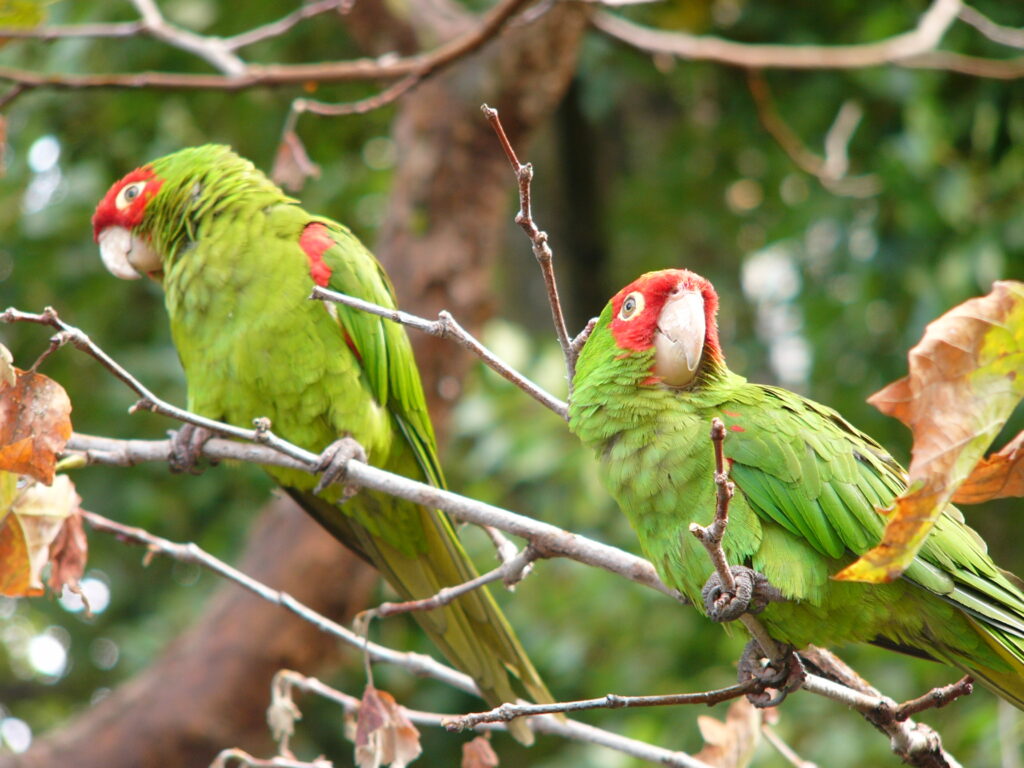
Their bright red masks provide them with the appearance of superheroes. Their top wings and upper thighs are highlighted with red (which is highly inconspicuous.)
| Length | 13.5 inches |
| Wingspan | 22 inches |
| Weight | 6 ounces |
They are frequently seen in blended flocks with the Mitred Parakeet (a very identical appearing cousin) and prefer exotic plants in cities and parks to raw environments.
Red-masked Parakeets, however, unlike Mitred, would only roost in native holes in oaks and palms. Native communities of about 200 individuals can be noticed in the Miami region.
7. Mitred Parakeet

Mitred parakeets, which are comparatively larger than Red-masked parakeets, feature red feathering on their faces as well, albeit it is far more patchy and spotty.
The crimson seen surrounding the top wings will be the same. The resemblances, along with their tendency to congregate, make them hard to distinguish them accurately.
| Length | 15 inches |
| Wingspan | 25 inches |
| Weight | 7 ounces |
They are located in Florida’s southern regions (particularly Miami) in the very same environment as the Red-masked, which are exotic plants in suburbs and parks.
They have now been observed roosting and reproducing in chimneys and building holes.
8. White-Eyed Parakeet
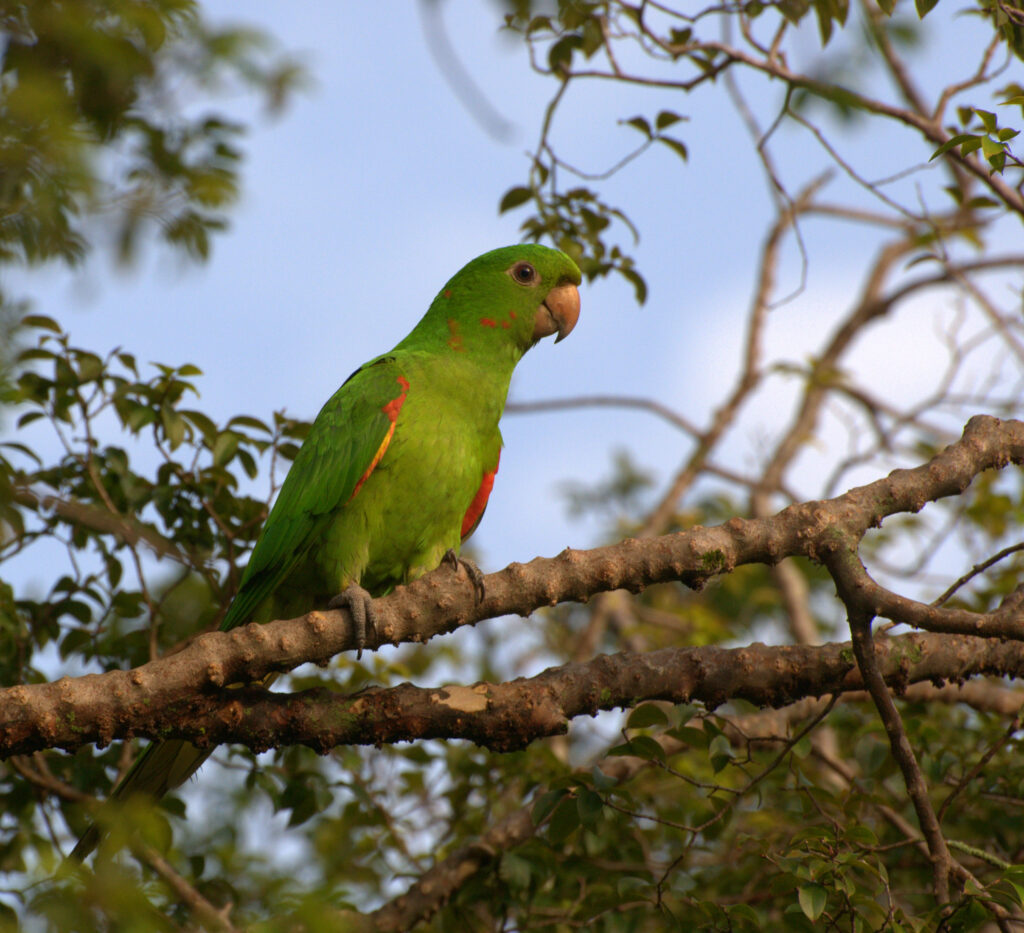
Another bird related to the Mitred and Red-masked. White-eyed parakeets have much fewer red tiny flecks on their heads and faces. Some red may be visible near the wing’s curve. This bird takes its title out of its white eye-ring.
However, it isn’t very useful in distinguishing it from Mitred and Red-masked birds, which both possess white eye rings.
The quantity of red just on the forehead, together with the color of the underwing, which would be highly yellow in White-eyed Parakeets, would be the deciding factors.
| Length | 13.5 inches |
| Wingspan | 22 inches |
| Weight | 6 ounces |
White-eyed parakeets have now been imported into 12 southern Florida states and are rather abundant in the Miami region. They make their nests in architectural holes and are under canopies.
9. White-Winged Parakeet
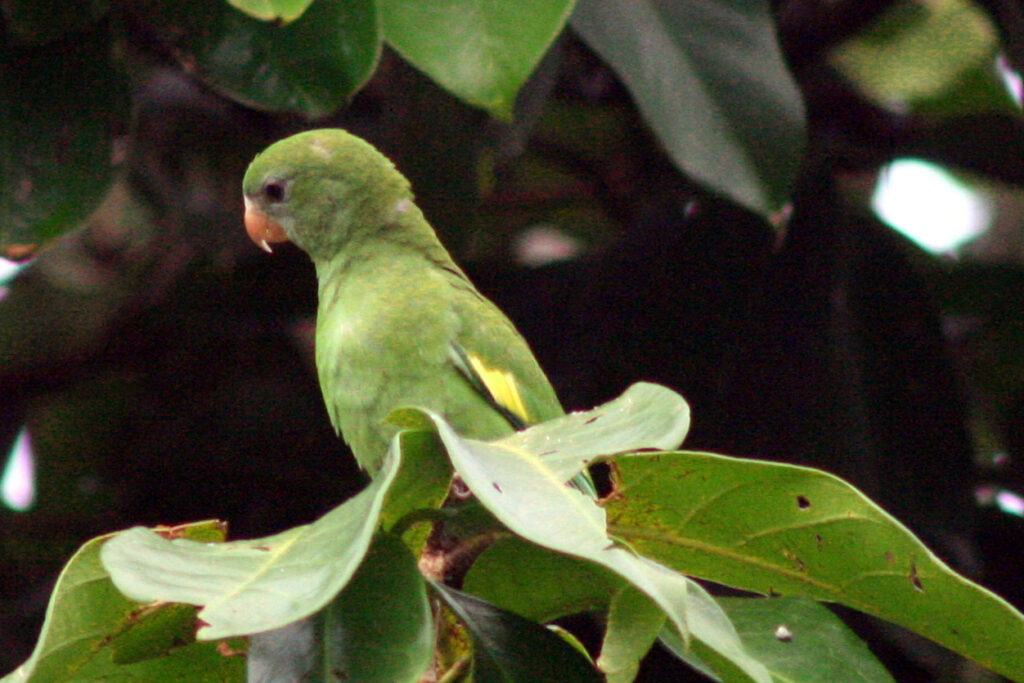
These tiny parakeets are beautiful little things! They aren’t much larger than budgies, and as they fly, you could see dazzling white spots on their wings.
When the bird is resting, a small amount of yellow will be seen beside the white just on the inside of the wing, and bluish coloration could be seen close to the white on the outside side of the wing.
| Length | 8.75 inches |
| Wingspan | 15 inches |
| Weight | 2.1 ounces |
Fort Lauderdale (+/- 200) has tiny indigenous numbers, while Miami (+/- 100) has even tiny populations. Since about the 1970s, they are less in numbers.
10. Yellow-Chevroned Parakeet

The White-winged Parakeet and then this subspecies are significantly correlated; up until 1997, they were both thought to be one species. The two nearly seem identical when at rest, however, when flying, you’ll observe the Yellow chevroned lacks the dazzling white wings band.
There have been reports of hybrids wherein both coexist.
| Length | 8.75 inches |
| Wingspan | 15 inches |
| Weight | 2.1 ounces |
It eats nuts and fruit in its natural environment, but feral colonies have evolved to suck nectar. If the feeders are empty, they would also hold back along.
In relation to population numbers and consistency, these guys appear to have been doing better than the White-wings. Florida is home to about 450 individuals, most of whom reside in Miami and a small number in Fort Lauderdale.
They seem to be getting more and more of them.
11. Green Parakeet

This bird has a very simple appearance; it is entirely green. The preponderance of its plumage is green, while there may be a few red flecks here and there on the neck (it is linked to the Mitred, White-eyed, and Red-masked, that also have minor red feathering).
It’s the only fully green parakeet in the country, with the occasional red feathers.
| Length | 13 inches |
| Wingspan | 21 inches |
| Weight | 8 ounces |
Together with their previously described cousins, these birds may be spotted in Miami and Fort Lauderdale. It is believed that their population is growing.
12. Red-Crowned Parrot

The Green cheeked or Red crowned Amazon is another name for this parrot. They feature a noticeable red crown with a hint of blue behind the eye and are typically characterized as stocky or meaty.
Males have red that extends from the beak towards the top of the head more prominently than females, who primarily exhibit red between the eyes.
The tail does have a golden band at the apex, while the wings have a red patch and dark blue ends.
| Length | 12 inches |
| Wingspan | 25 inches |
| Weight | 11 ounces |
Red-crowned In the early mornings and nights, you may observe parrots making a commotion. They enjoy cawing, and they will scream loudly about everything.
Breeding couples protect their nest location from intruding pairs with a synchronized vocal duet. They do not even care about vocalizing close near their nest. This enables poachers to locate them and, regrettably, has led to a reduction in their number in their natural environment.
Only a small portion of the U.S. population, about 400 birds, comes from a naturalized colony in southeast Florida. It’s thought that the birds here are becoming more numerous than those in their natural environment, which is disappearing and becoming endangered.
13. Orange-Winged Parrot

Their bodies are comparable to those of other Amazona parrots, such as the Red-lored and Red-crowned, and they have a red patch and blue wings. Orange narrow stripes may be seen on their tails.
The color of the forehead is the primary identifying factor for these parrots. Baby blue streaks cross across above the eye and run to the rear of the head on Orange-wings’ yellow face. The margins of their bills are dark.
| Length | 12.5 inches |
| Wingspan | 33 cm (13 in) |
| Weight | 370 g |
Little is revealed about its united States history as most psittacids do. There have been nests discovered in royal palm snags, and Miami and Fort Lauderdale are home to approximately 100 of these birds, whose numbers are growing.
14. Yellow-Headed Parrot

The vivid yellow head and crimson wings of this parrot set it apart. Yellow-headed parrots, unlike most parrots, fly relatively quietly. They create human-like cries when they have been agitated.
| Length | 14 inches |
| Wingspan | 28 inches |
| Weight | 15.8 ounces |
Yellow-headed Parrots are vulnerable and listed in CITES Appendix I, which implies that the purchase and trading of any wild-caught birds are prohibited, and the trade of birds reared in aviculture is restricted throughout most regions of the planet.
Small communities breed in southeastern Florida, and they’re on the decline.
15. Chestnut-Fronted Macaw
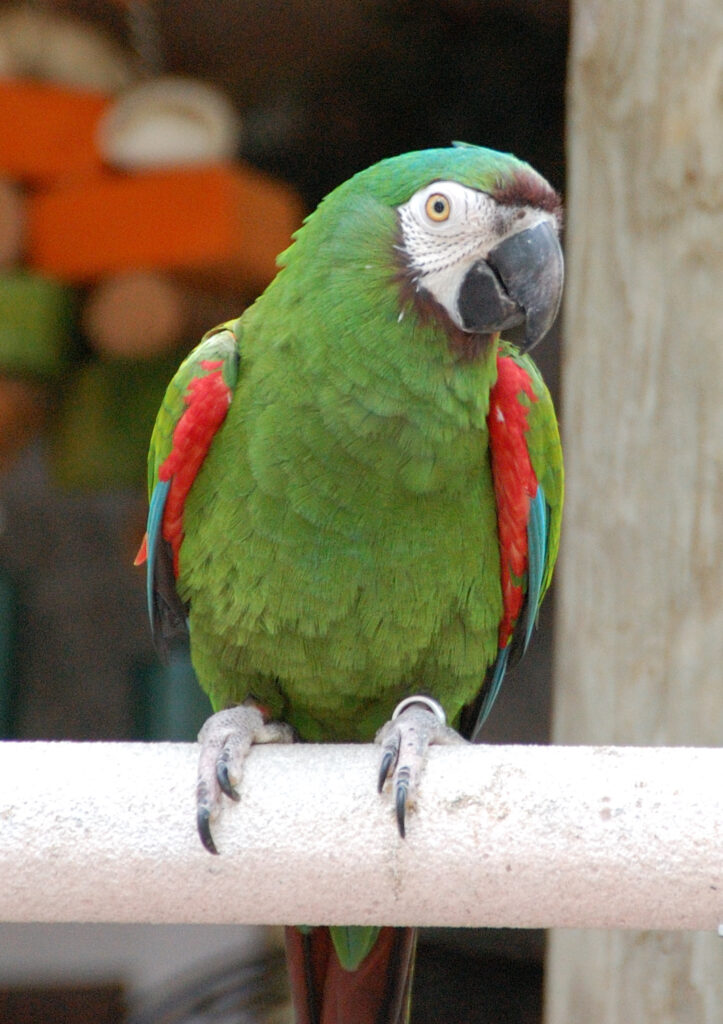
The Chestnut-fronted Macaw is bigger than the last subspecies on this listing, having reddish-brown underwings, bright, stunning blue primaries, and a long sharp tale tinted with blue upon the outer ends and chestnut on the inner patches.
Their heads feature a bald, white facial patch with chestnut feathering on the brow and a big black beak.
| Length | 18 inches |
| Wingspan | 30 inches |
| Weight | 15 ounces |
These macaws are often known as “Severe” macaws, owing to their violent and sarcastic personalities that emerge when they reach maturity. They are otherwise highly gregarious and like companionship.
A tiny naturalized breed has emerged in southeastern Florida, including nesting locations in the Miami region.
Conclusion
There are several kinds of parrots species presently living in Florida, but none of them are native to the state. All were imported into captivity by the exotic pet trade and since then have escaped to procreate and enjoy their independence.
If you’re out and about in Florida, you should become acquainted with the many identifying traits of every species so that you really can quickly recognize all parrots you come across.
However, this can be problematic for certain species since they share traits that make species challenging to distinguish.
FAQ
So what are Florida's adventurous parrots?
They are located in Florida’s southern regions (particularly Miami) in the very same environment as the Red-masked, which is exotic flora in suburbs and gardens. They have now been observed roosting and reproducing in chimneys and building holes.
Do macaws inhabit Florida?
Blue and gold macaws are native to South and Central America but have been discovered in a limited area of South Florida over the years.
Last Updated on March 22, 2023 by Lily Aldrin
